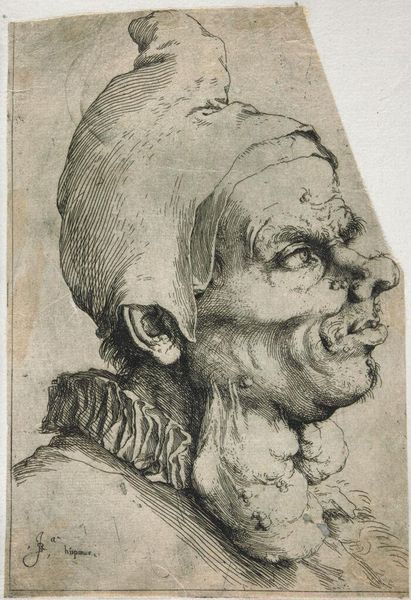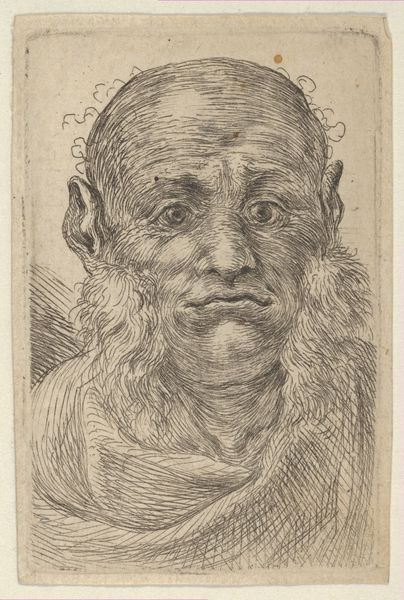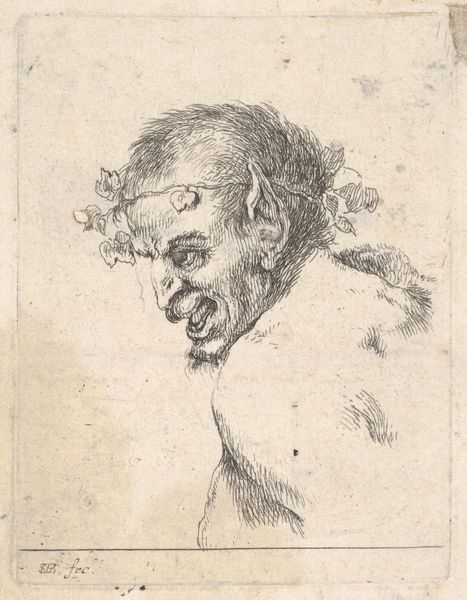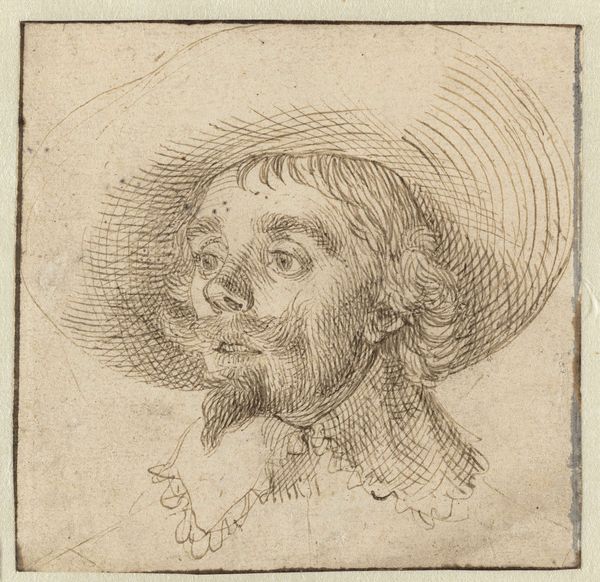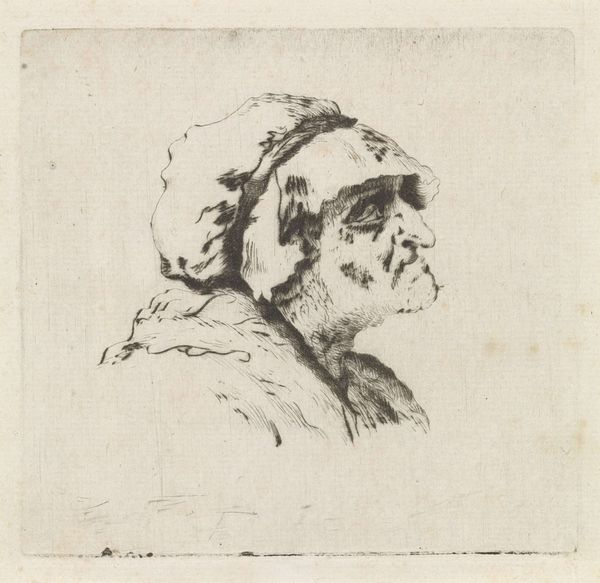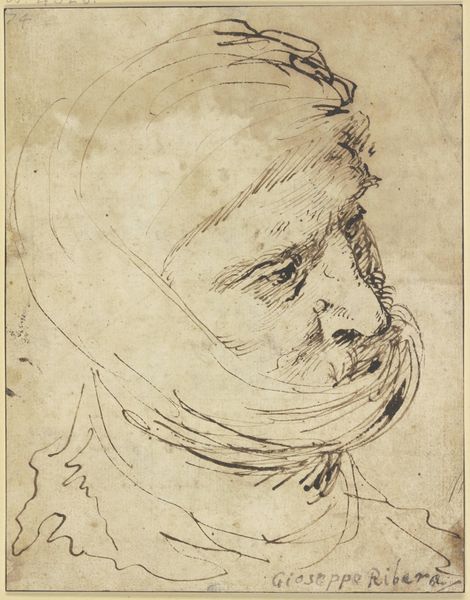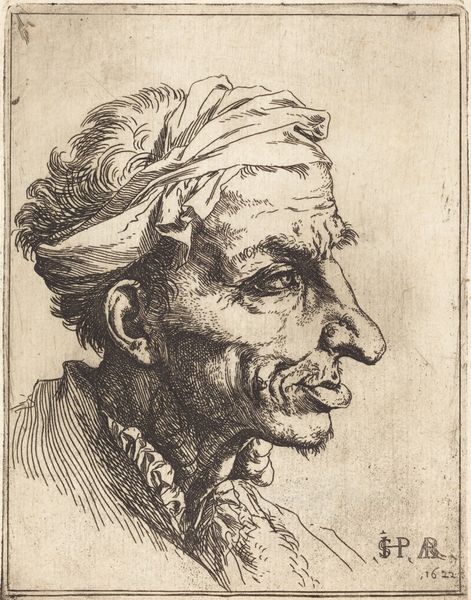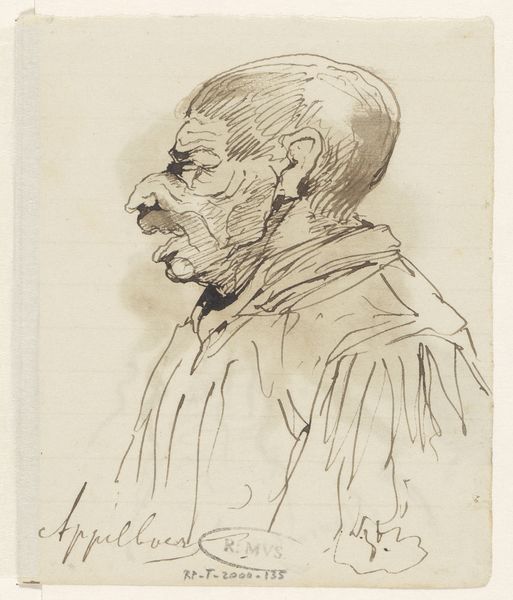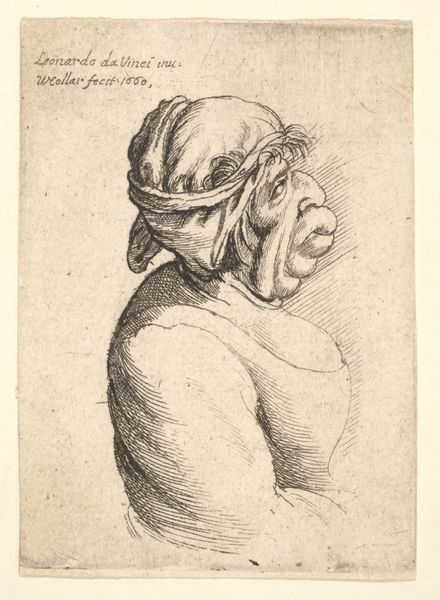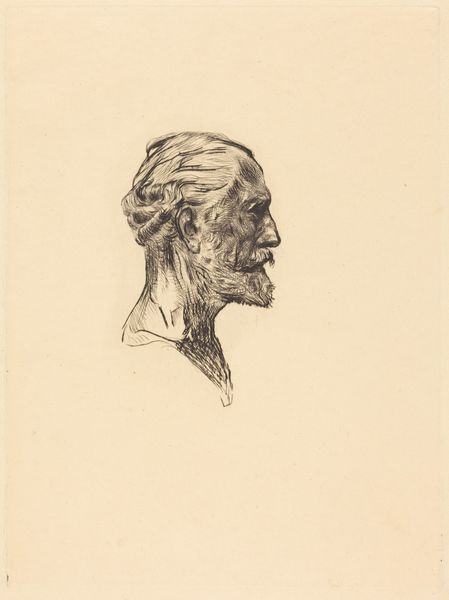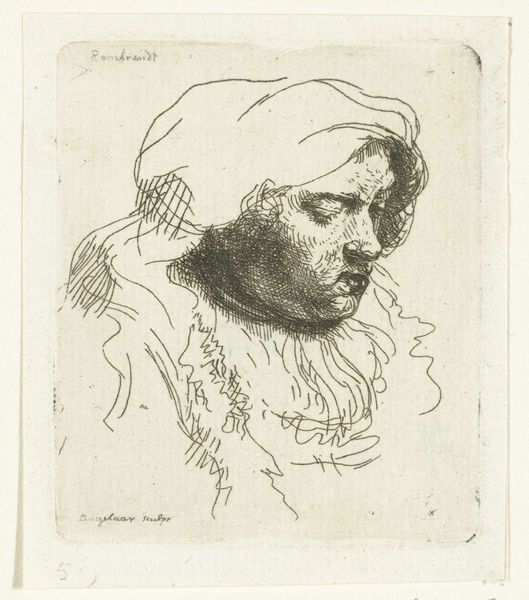
drawing, print, etching
#
portrait
#
drawing
#
baroque
#
head
# print
#
etching
#
mannerism
#
portrait drawing
#
grotesque
Dimensions: Sheet: 8 7/16 × 5 1/2 in. (21.4 × 14 cm)
Copyright: Public Domain
Editor: Here we have "Large Grotesque Head," an etching by Jusepe de Ribera from the early 17th century. It’s quite a striking image. The texture of the skin, the depth of the shadows... it’s all incredibly intense. What do you make of it? Curator: The immediate impact arises from the strategic use of line. Note how Ribera manipulates the density and direction of etched lines to define form and texture. The concentration of lines around the figure’s left side and neck creates a stark contrast, accentuating the grotesque details and conveying a sense of weight. Do you notice the different techniques used to convey form? Editor: Yes, in some areas the lines are very close together, almost like shading, while in others they are more sparse and create a sense of light. How does this all contribute to the overall reading? Curator: Exactly. Ribera is manipulating our perceptions through pure mark-making. By creating contrast and a visual rhythm, Ribera commands the viewer's eye, directing us to the areas he wishes to emphasize, thus enhancing the overall grotesque effect. It’s a technical display used to heighten the dramatic impact. Editor: So it's the "how" rather than necessarily the "why" that holds the key? Curator: Precisely. While cultural and thematic contexts provide insight, analyzing the artist's formal decisions grants us a deeper understanding of the artwork's essence and its effect on the viewer. Editor: I’m seeing a whole new layer of intention now. The way he guides our eye using just lines and shadows, it’s all much more deliberate than I first realized. Curator: Indeed. The power of close visual analysis allows us to understand and decode an image like this.
Comments
No comments
Be the first to comment and join the conversation on the ultimate creative platform.
